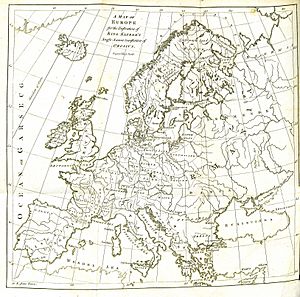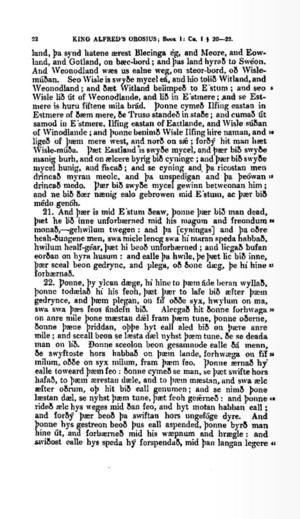Wulfstan of Hedeby facts for kids

Wulfstan of Hedeby was a brave traveler and trader who lived a long, long time ago, in the late 800s. He wrote about his amazing sea journeys. His stories, along with those of another trader named Ohthere of Hålogaland, were put into a very old book called the Old English Orosius. We don't know for sure if Wulfstan was from England or if he truly came from a place called Hedeby, which is now in northern Germany.
Contents
Wulfstan's Incredible Journey
Wulfstan's most famous trip was a sea journey he took around the year 880. He sailed from Hedeby to a busy trading town called Truso. Truso was in the land of the Old Prussians, who were also known as the Aesti.
Setting Sail from Hedeby
Wulfstan said his ship sailed from Haethum to Truso in just seven days and nights. His ship had its sails up the whole time, moving quickly across the water.
Lands Along the Way
As Wulfstan sailed, he carefully noted all the lands he passed.
- On his right side, he saw a place called Weonodland.
- On his left side, he saw several islands and lands. These included Langland, Laeland, Falster, and Sconey. All these places belonged to Denmark.
- After that, on his left, was the land of the Burgundians. They had their own king.
- Then, he passed Blekingey, Meore, Eowland, and Gotland. These lands were ruled by the Sweons.
- Weonodland stayed on his right side all the way to the mouth of the Weissel River.
Why Wulfstan's Account Is Important
Wulfstan's travel story is very special for a few reasons.
First Mention of Denmark
His text might be the very first time the word "Denmark" (written as Danemearcan) was ever recorded! This helps us understand how old the name of this country is.
Learning About the Old Prussians
Wulfstan's writings also give us some of the earliest details about the unique traditions and customs of the Western Balts. These people were the Old Prussians, also called the Aesti. Wulfstan even called their land Witland.
A Possible Reason for His Trip
The exact reason for Wulfstan's journey is not fully clear. One idea is that King Alfred of England was interested in finding new friends or allies. He might have wanted to team up with the Prussians (Aesti) to help fight against the Vikings.
See also
 In Spanish: Wulfstan de Hedeby para niños
In Spanish: Wulfstan de Hedeby para niños


